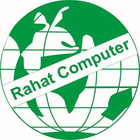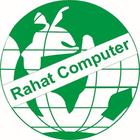Desktop Security Measures: A Comprehensive Guide

In an age where cyber threats are becoming increasingly sophisticated, it is more important than ever to ensure the security of our desktops. From personal computers to workstations, the need for comprehensive desktop security measures has never been greater. In this comprehensive guide, we will explore the various strategies and tools available to protect our desktops from potential threats, ranging from malware and phishing attacks to unauthorized access. By implementing these measures, you can safeguard your digital assets and ensure the privacy and security of your data.
Related: Buy Best Desktops in Oman
Desktop Security Measures: A Comprehensive Guide
In today’s digital age, desktop security has become more important than ever. With the increasing number of cyber threats and the potential for sensitive information to be compromised, it is crucial to implement comprehensive security measures to protect your desktop and its contents. This guide will provide you with a detailed overview of the most effective desktop security measures you can take to safeguard your data and ensure peace of mind.
- Strong Passwords: One of the simplest yet most effective ways to enhance desktop security is by creating strong passwords. Use a combination of uppercase and lowercase letters, numbers, and special characters to make your password more difficult to crack. Avoid using easily guessable information such as your name or birthdate.
- Firewall Protection: A firewall acts as a barrier between your desktop and the external network, monitoring and controlling incoming and outgoing traffic. Enable your desktop’s built-in firewall or install a reputable third-party firewall software to add an extra layer of protection against unauthorized access.
- Antivirus Software: Install a reliable antivirus software to detect and remove malicious programs that can harm your desktop. Regularly update the antivirus software to ensure it is equipped with the latest virus definitions and security patches.
- Regular Software Updates: Keep your operating system and software applications up to date to patch any vulnerabilities that could be exploited by hackers. Enable automatic updates or regularly check for updates manually to ensure your desktop is protected against the latest threats.
- Data Encryption: Encrypting your sensitive data adds an additional level of security by converting it into a format that can only be accessed with a decryption key. Use encryption tools to protect confidential files and folders stored on your desktop.
Implementing these desktop security measures will significantly reduce the risk of unauthorized access, data breaches, and malware infections. Remember, maintaining a proactive approach to desktop security is crucial to safeguarding your valuable information and maintaining the integrity of your digital presence. Stay vigilant and stay protected!
Understanding the Threat Landscape: Identifying Potential Vulnerabilities and Risks
In today’s digital age, it is crucial for individuals and organizations to have a solid understanding of the threat landscape in order to protect their desktops from potential vulnerabilities and risks. By identifying these vulnerabilities and risks, you can take proactive measures to enhance your desktop security and safeguard sensitive information.
One important aspect of understanding the threat landscape is recognizing the various potential vulnerabilities that can put your desktop at risk. These vulnerabilities can range from outdated software and operating systems to weak passwords and lack of encryption. By acknowledging these potential weaknesses, you can take the necessary steps to address them and minimize the chances of a security breach.
In addition, it is equally important to identify the risks that exist within your specific environment. These risks can include malware attacks, phishing attempts, and insider threats. By understanding the specific risks that your desktop may face, you can implement targeted security measures to mitigate these risks and keep your desktop safe.
To help you in your journey towards comprehensive desktop security, we have compiled a list of recommended security measures. These measures include:
- Regularly updating your software and operating system to ensure you have the latest security patches and bug fixes.
- Implementing strong and unique passwords for all accounts and utilizing a password manager to securely store them.
- Enabling firewalls and utilizing antivirus software to detect and prevent malware infections.
- Encrypting sensitive data to protect it from unauthorized access.
- Educating yourself and your employees on best practices for online security, such as avoiding suspicious emails and websites.
By following these recommended security measures, you can significantly enhance your desktop security and reduce the risk of falling victim to cyber threats. Remember, understanding the threat landscape and taking proactive steps to protect your desktop is an ongoing process that requires vigilance and continuous adaptation to evolving threats.
Securing Your Operating System: Best Practices and Proactive Measures
In today’s digital world, the security of our operating systems is of utmost importance. With the increasing number of cyber threats, it is crucial to adopt best practices and proactive measures to ensure the safety of our desktops. In this comprehensive guide, we will explore various security measures that can be implemented to secure your operating system and protect your valuable data.
- Keep your operating system up to date: Regularly update your operating system to ensure that you have the latest security patches and bug fixes. This will help in closing any vulnerabilities that may exist in your system.
- Use strong and unique passwords: Create strong passwords that are a combination of letters, numbers, and special characters. Avoid using common phrases or personal information that can be easily guessed. Additionally, use a different password for each of your accounts to prevent unauthorized access.
- Enable two-factor authentication: Two-factor authentication adds an extra layer of security to your desktop by requiring a second form of verification, such as a code sent to your mobile device, in addition to your password.
- Install antivirus software: Protect your operating system from malware and viruses by installing reliable antivirus software. Regularly update the software to ensure that it can detect and remove the latest threats.
- Be cautious of phishing attacks: Phishing attacks are a common method used by cybercriminals to gain unauthorized access to your system. Be vigilant while opening emails or clicking on links from unknown sources. Avoid providing personal or sensitive information unless you are certain of the source.
- Use a firewall: A firewall acts as a barrier between your desktop and the internet, monitoring incoming and outgoing network traffic. Enable a firewall to block unauthorized access to your system and prevent potential security breaches.
By following these desktop security measures, you can significantly reduce the risk of cyber threats and ensure the safety of your operating system. Remember, proactive measures are key to maintaining a secure environment for your valuable data. Stay informed and stay protected!
Protecting Your Data: Encryption, Backups, and Access Control
With the increasing reliance on technology in our daily lives, it has become more important than ever to protect our data from potential threats. In this comprehensive guide to desktop security measures, we will explore three key strategies: encryption, backups, and access control.
Encryption is a powerful tool that ensures the confidentiality and integrity of your data. By converting information into an unreadable format, encryption prevents unauthorized individuals from accessing sensitive data even if it falls into the wrong hands. With the use of encryption algorithms and keys, you can safeguard your files, emails, and even your entire hard drive. Implementing encryption is a crucial step in protecting your data from data breaches or theft.
Backups are essential for safeguarding against data loss. Regularly creating backups of your important files and documents ensures that even if your computer crashes, gets stolen, or is infected by malware, you can easily restore your data. Consider using cloud storage services or external hard drives to securely store your backups. By having multiple copies of your data, you can minimize the risk of permanent loss and ensure business continuity.
Access control plays a vital role in preventing unauthorized access to your desktop and its contents. By setting up strong passwords and enabling multi-factor authentication, you can add an extra layer of security to your login process. Additionally, consider implementing role-based access control (RBAC) to limit the access privileges of different users or groups. This way, you can ensure that only authorized individuals have access to sensitive information, mitigating the risk of data breaches.
Protecting your data is not a one-time task but an ongoing effort. By implementing encryption, creating regular backups, and establishing robust access control measures, you can significantly enhance the security of your desktop and safeguard your valuable information from potential threats. Remember, proactive measures are always better than dealing with the consequences of a data breach.
Strengthening Your Network Defense: Firewalls, Antivirus Software, and Intrusion Detection Systems
One of the most crucial aspects of maintaining a secure desktop environment is implementing robust network defense measures. By utilizing a combination of firewalls, antivirus software, and intrusion detection systems, you can significantly enhance your desktop’s security posture.
Firewalls serve as the first line of defense against external threats by monitoring and controlling incoming and outgoing network traffic. They act as a protective barrier, filtering out potentially malicious data packets and allowing only authorized traffic to pass through. Firewalls can be implemented at both the software and hardware levels, providing an added layer of protection against various types of cyberattacks. It is essential to configure firewalls to suit your specific needs and regularly update them to ensure maximum effectiveness.
In addition to firewalls, antivirus software plays a vital role in safeguarding your desktop against malware, viruses, and other malicious software. These programs scan files, emails, and websites for potential threats, constantly monitoring and detecting any suspicious activity. It is crucial to keep your antivirus software up to date to benefit from the latest threat intelligence and ensure optimal protection. Regular scans and timely removal of any detected threats will help maintain a secure desktop environment.
Furthermore, intrusion detection systems (IDS) are designed to identify and respond to unauthorized access attempts or suspicious activities within your network. IDS can be categorized into two types: network-based IDS, which monitors network traffic for potential threats, and host-based IDS, which focuses on individual desktops or servers. By implementing an IDS, you can promptly detect and mitigate any potential security breaches, providing an additional layer of defense against cyber threats. Regular monitoring and analysis of IDS logs can help identify patterns and potential vulnerabilities, allowing for proactive security measures.
In summary, to strengthen your network defense and ensure comprehensive desktop security, it is essential to employ a combination of firewalls, antivirus software, and intrusion detection systems. These measures work together to protect your desktop environment from various cyber threats, providing you with peace of mind and confidence in your digital activities.
The Conclusion
In conclusion, implementing robust desktop security measures is essential in safeguarding your digital assets and personal information from potential threats. By following the comprehensive guide provided in this article, you can take proactive steps to secure your desktop and minimize the risk of cyberattacks. Remember, staying informed and regularly updating your security measures is key to staying one step ahead of potential threats. With the right tools and knowledge, you can navigate the digital landscape with confidence and peace of mind. Stay safe, stay secure.



